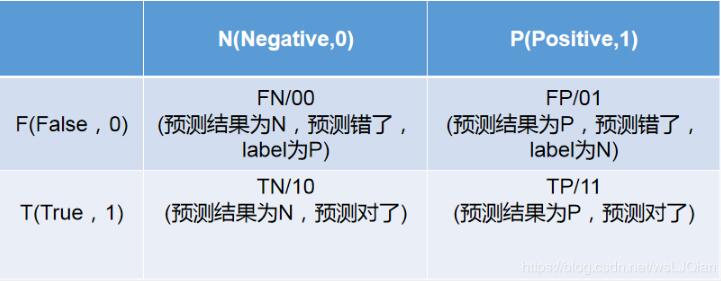如何用Django处理gzip数据流
最近在工作中遇到一个需求,就是要开一个接口来接收供应商推送的数据。项目采用的python的django框架,我是想也没想,就直接一梭哈,写出了如下代码:
class XXDataPushView(APIView): ''' 接收xx数据推送 '''# ... @white_list_required def post(self, request, **kwargs): req_data = request.data or {}# ...
但随后,发现每日数据并没有任何变化,质问供应商是否没有做推送,在忽悠我们。然后对方给的答复是,他们推送的是gzip压缩的数据流,接收端需要主动进行解压。此前从没有处理过这种压缩的数据,对方具体如何做的推送对我来说也是一个黑盒。
因此,我要求对方给一个推送的简单示例,没想到对方不讲武德,仍过来一段没法单独运行的java代码:
private byte[] compress(JSONObject body) { try { ByteArrayOutputStream out = new ByteArrayOutputStream(); GZIPOutputStream gzip = new GZIPOutputStream(out); gzip.write(body.toString().getBytes()); gzip.close(); return out.toByteArray(); } catch (Exception e) { logger.error('Compress data failed with error: ' + e.getMessage()).commit(); } return JSON.toJSONString(body).getBytes();}public void post(JSONObject body, String url, FutureCallback<HttpResponse> callback) { RequestBuilder requestBuilder = RequestBuilder.post(url); requestBuilder.addHeader('Content-Type', 'application/json; charset=UTF-8'); requestBuilder.addHeader('Content-Encoding', 'gzip'); byte[] compressData = compress(body); int timeout = (int) Math.max(((float)compressData.length) / 5000000, 5000); RequestConfig.Builder requestConfigBuilder = RequestConfig.custom(); requestConfigBuilder.setSocketTimeout(timeout).setConnectTimeout(timeout); requestBuilder.setEntity(new ByteArrayEntity(compressData)); requestBuilder.setConfig(requestConfigBuilder.build()); excuteRequest(requestBuilder, callback);}private void excuteRequest(RequestBuilder requestBuilder, FutureCallback<HttpResponse> callback) { HttpUriRequest request = requestBuilder.build(); httpClient.execute(request, new FutureCallback<HttpResponse>() { @Override public void completed(HttpResponse httpResponse) { try {int responseCode = httpResponse.getStatusLine().getStatusCode();if (callback != null) { if (responseCode == 200) { callback.completed(httpResponse); } else { callback.failed(new Exception('Status code is not 200')); }} } catch (Exception e) {logger.error('Get error on ' + requestBuilder.getMethod() + ' ' + requestBuilder.getUri() + ': ' + e.getMessage()).commit();if (callback != null) { callback.failed(e);} } EntityUtils.consumeQuietly(httpResponse.getEntity()); } @Override public void failed(Exception e) { logger.error('Get error on ' + requestBuilder.getMethod() + ' ' + requestBuilder.getUri() + ': ' + e.getMessage()).commit(); if (callback != null) {callback.failed(e); } } @Override public void cancelled() { logger.error('Request cancelled on ' + requestBuilder.getMethod() + ' ' + requestBuilder.getUri()).commit(); if (callback != null) {callback.cancelled(); } } });}
从上述代码可以看出,对方将json数据压缩为了gzip数据流stream。于是搜索django的文档,只有这段关于gzip处理的装饰器描述:
django.views.decorators.gzip 里的装饰器控制基于每个视图的内容压缩。
gzip_page()如果浏览器允许 gzip 压缩,那么这个装饰器将压缩内容。它相应的设置了 Vary 头部,这样缓存将基于 Accept-Encoding 头进行存储。
但是,这个装饰器只是压缩请求响应至浏览器的内容,我们目前的需求是解压缩接收的数据。这不是我们想要的。
幸运的是,在flask中有一个扩展叫flask-inflate,安装了此扩展会自动对请求来的数据做解压操作。查看该扩展的具体代码处理:
# flask_inflate.pyimport gzipfrom flask import requestGZIP_CONTENT_ENCODING = ’gzip’class Inflate(object): def __init__(self, app=None): if app is not None: self.init_app(app) @staticmethod def init_app(app): app.before_request(_inflate_gzipped_content)def inflate(func): ''' A decorator to inflate content of a single view function ''' def wrapper(*args, **kwargs): _inflate_gzipped_content() return func(*args, **kwargs) return wrapperdef _inflate_gzipped_content(): content_encoding = getattr(request, ’content_encoding’, None) if content_encoding != GZIP_CONTENT_ENCODING: return # We don’t want to read the whole stream at this point. # Setting request.environ[’wsgi.input’] to the gzipped stream is also not an option because # when the request is not chunked, flask’s get_data will return a limited stream containing the gzip stream # and will limit the gzip stream to the compressed length. This is not good, as we want to read the # uncompressed stream, which is obviously longer. request.stream = gzip.GzipFile(fileobj=request.stream)
上述代码的核心是:
request.stream = gzip.GzipFile(fileobj=request.stream)
于是,在django中可以如下处理:
class XXDataPushView(APIView): ''' 接收xx数据推送 '''# ... @white_list_required def post(self, request, **kwargs): content_encoding = request.META.get('HTTP_CONTENT_ENCODING', '') if content_encoding != 'gzip': req_data = request.data or {} else: gzip_f = gzip.GzipFile(fileobj=request.stream) data = gzip_f.read().decode(encoding='utf-8') req_data = json.loads(data) # ... handle req_data
ok, 问题完美解决。还可以用如下方式测试请求:
import gzipimport requestsimport jsondata = {}data = json.dumps(data).encode('utf-8')data = gzip.compress(data)resp = requests.post('http://localhost:8760/push_data/',data=data,headers={'Content-Encoding': 'gzip', 'Content-Type':'application/json;charset=utf-8'})print(resp.json())
以上就是如何用Django处理gzip数据流的详细内容,更多关于Django处理gzip数据流的资料请关注好吧啦网其它相关文章!
相关文章:

 网公网安备
网公网安备